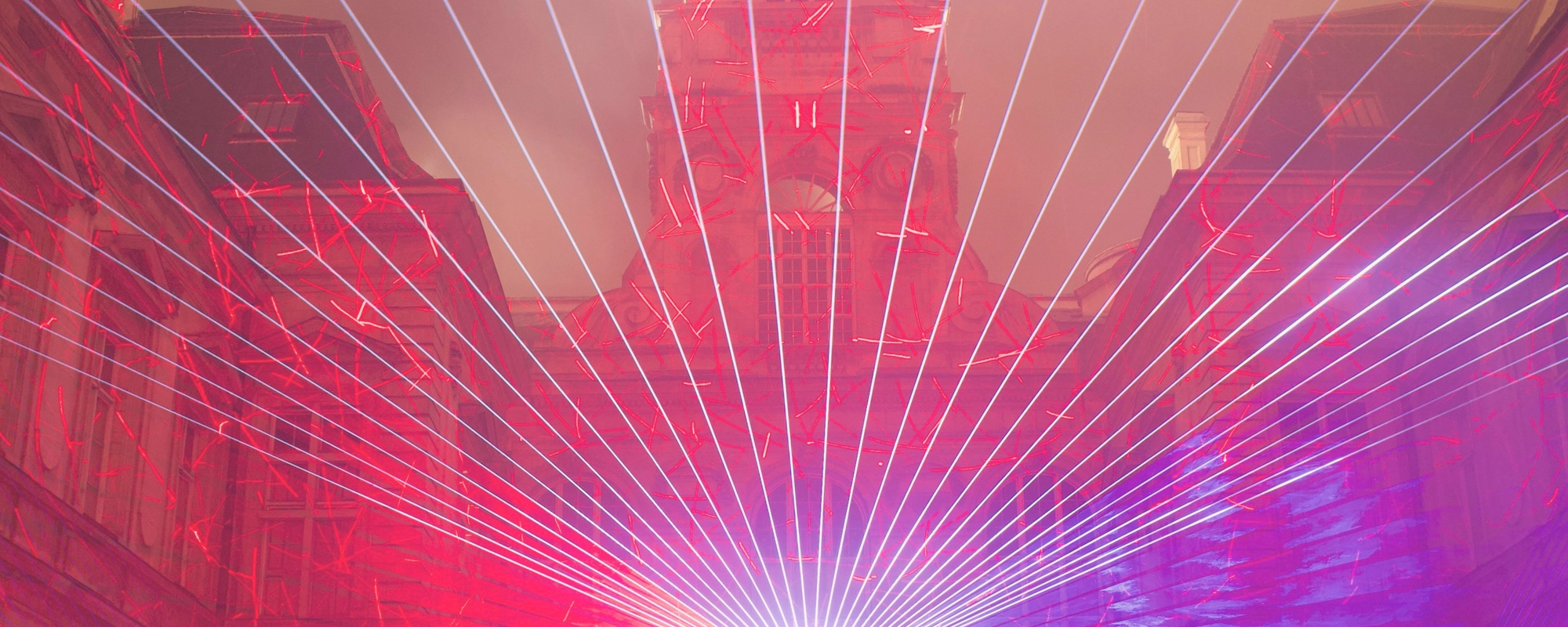3D mapping has completely transformed the way we create visual experiences at events. It is an innovative technology that enables us to surprise attendees with a unique visual spectacle.

By projecting images and videos onto three-dimensional surfaces, a common space is transformed into a dynamic and immersive work of art. The options range from product presentations to live shows. 3D mapping offers a new way to experience an event, serving as a perfect solution to elevate your event to the next level. In this post, we will explore what 3D mapping is, how to implement it optimally in each event, its advantages, and the trends that will shape its use in the medium to long term.
What is 3D mapping?
3D mapping, also known as 3D projection, is a technique that projects images, videos, or animations onto physical surfaces such as buildings, structures, stages, and three-dimensional objects. Unlike conventional projection, 3D mapping uses the geometry of the surface as a reference and adapts the visual content to fit its shapes, creating a visual effect that appears to come to life.
3D mapping is based on the combination of several key elements: projection technology, specialized software, and creative design. The projectors used in these presentations are high-resolution and high-powered. Without these specifications, it would be impossible to project sharp images onto irregular and complex surfaces, resulting in an immersive experience that can transform any event into a visual spectacle.
In the context of events, 3D mapping enhances presentations, product launches, festivals, concerts, and any activity where creating an impactful visual environment is essential. It’s a technology that allows you to tell stories in an engaging way, ensuring that the experience remains memorable for attendees by capturing the audience’s attention and keeping them involved at all times.
Advantages of Using 3D Mapping in Events
The use of 3D mapping in events offers numerous advantages. One of the main benefits is its ability to create unique and personalized visual experiences that not only captivate attendees but also reinforce the brand image or message being conveyed. Another significant advantage of this technology is its versatility. 3D mapping can be adapted to a wide variety of surfaces, making it suitable for different types of spaces—from auditoriums to urban outdoor settings. Additionally, the visual content can be modified as needed to accommodate changes in the environment or event flow, making it a flexible tool for any kind of presentation.
Another key advantage is its ability to actively engage and captivate the audience. 3D mapping keeps the audience alert and involved. The projections can adapt to the movements and actions of the presenters, if present, allowing the visual content to evolve in real time. This creates a more interactive and appealing experience for the attendees.
Finally, 3D mapping can have a strong emotional impact. The projected images and animations can create a unique atmosphere that resonates with the audience’s emotions, providing a sense of overall satisfaction when evaluating the event experience. This makes it an effective tool for creating lasting memories and leaving a lasting impression on the attendees.
Steps to Implement 3D Mapping in Your Event
To implement 3D mapping in an event, proper planning and maximum coordination are essential to ensure that the final result is as spectacular as expected. The first step is to select the most suitable space. 3D mapping works best on large surfaces with potentially complex shapes. Therefore, it is important to choose a location that offers the possibility of projecting onto interesting structures (facades, walls, stages, 3D objects, etc.).
The next step is to select the most suitable visual content. Whether projecting an animated video, static images, or live effects, the content must be carefully designed to fit the chosen surface and ensure visibility from any angle. The use of specialized 3D mapping software plays a crucial role in this stage, as it allows for precise adjustments to the visual content, ensuring it aligns perfectly with the geometry of the space for an accurate and seamless projection.
Choosing the right projection equipment is an essential factor. Achieving a sharp and clear projection is only possible with high-quality projectors capable of covering the surface uniformly and accurately. Pre-event testing is crucial to ensure that the technology functions correctly and that the content is displayed as expected.
Coordinating the logistical and technical aspects of the event is crucial. 3D mapping requires precise control of lighting and sound, making it essential to have an experienced technical team that ensures everything runs smoothly. The synchronization of projectors and proper adjustment of visual content are key elements in delivering an effective and immersive visual experience.
Trends and the Future of 3D Mapping in the Event Industry
We are witnessing a technique that has gained popularity in recent years and continues to evolve. Current trends indicate an increasing use of this technology in large-scale events (concerts, festivals, product launches), where visual impact is essential.
One of the main trends is the integration of immersive technologies. Combining 3D mapping with augmented reality (AR) and virtual reality (VR) enables the creation of more impactful experiences, where the audience is not just a spectator but actively interacts with the projections in real time. The use of these three technologies allows for the development of more dynamic and immersive events.
Another trend shaping the future of this technology is the use of 3D mapping in unconventional spaces. Mapping cities or natural landscapes for outdoor events or urban spaces allows this technology to transform any location into a three-dimensional canvas. Finally, the future of 3D mapping points toward increasing personalization, with more specific adaptations—not only to the space but also to audience behavior and preferences—creating truly tailored and immersive experiences.
At MTGlobal we have the necessary expertise to turn these productions into reality. Our Event Management and Production teams are in charge of creating visual experiences that leave an indelible impression on those attending your event.